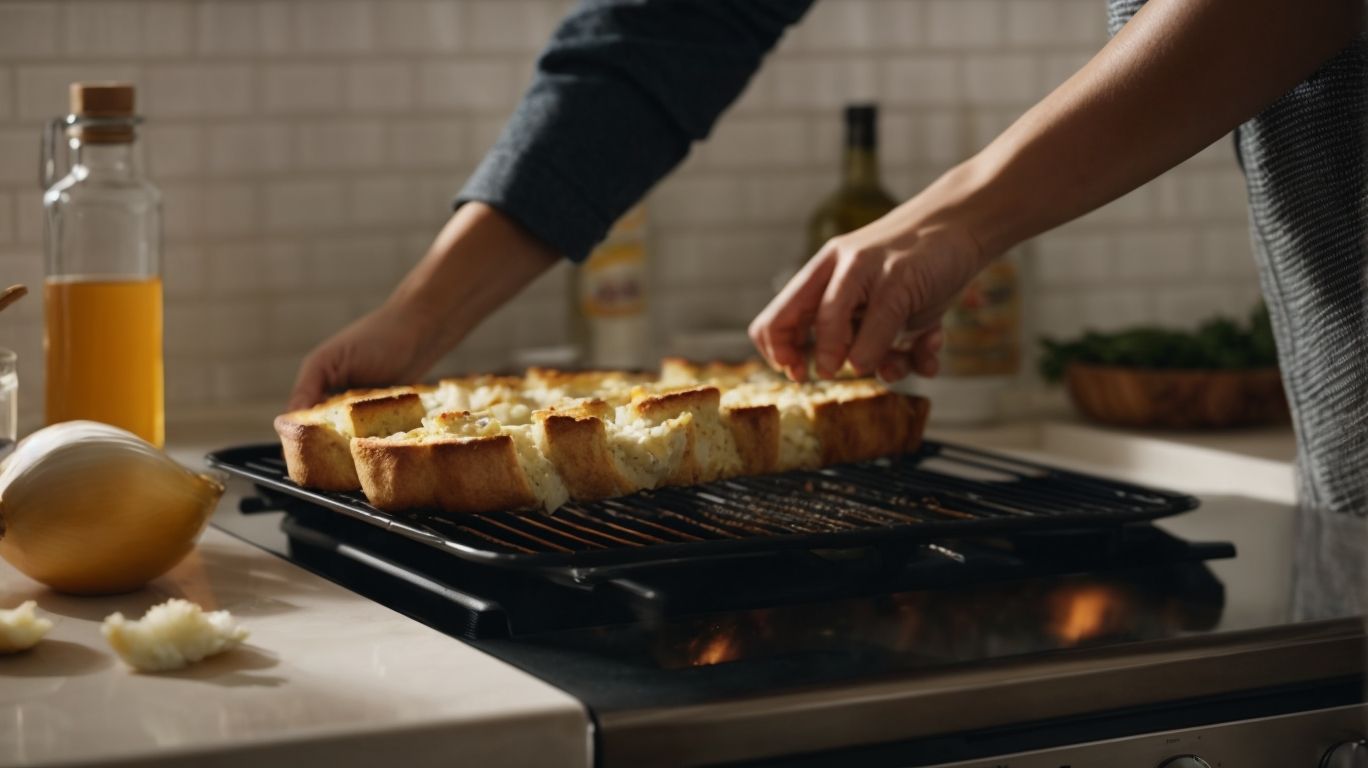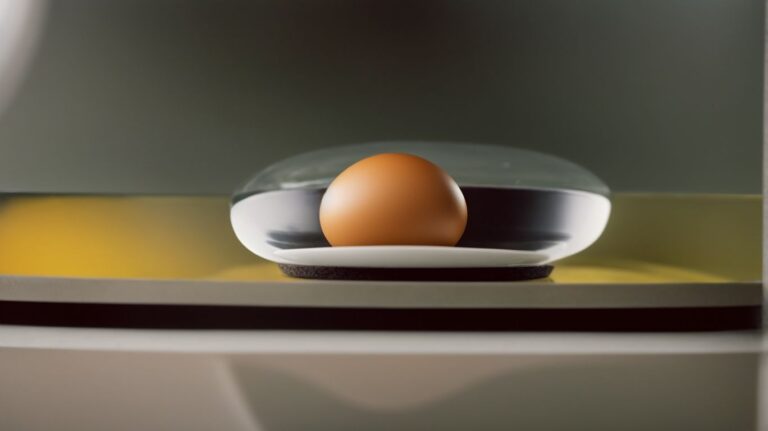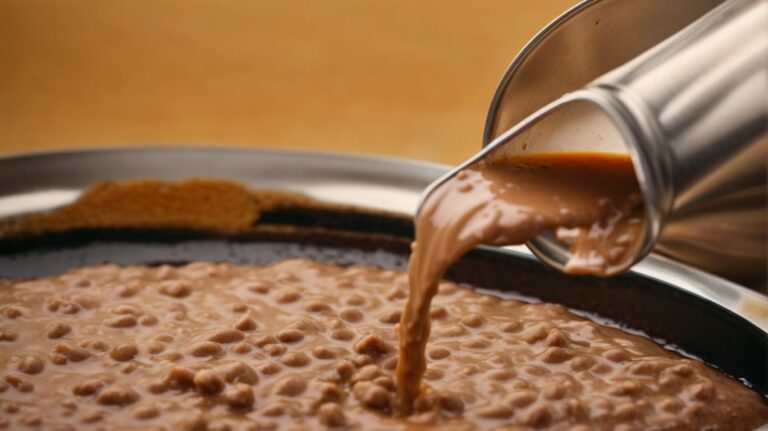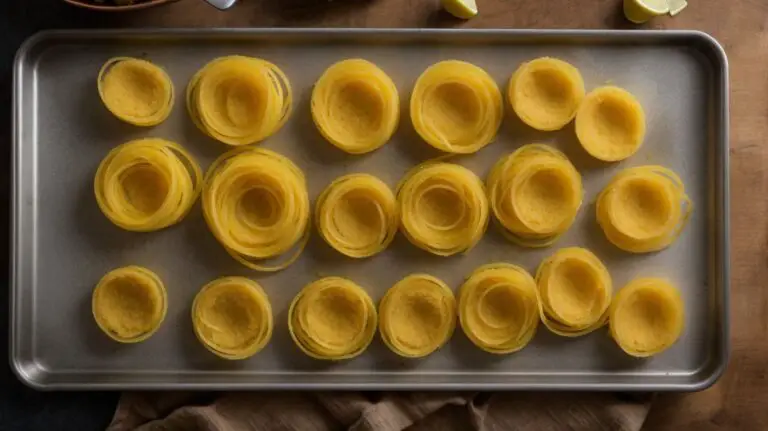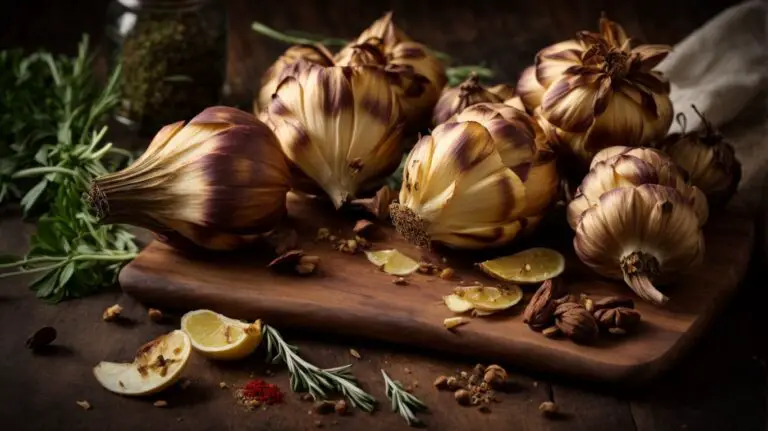How to Cook Garlic Bread Without an Oven?
Garlic bread, a classic and beloved side dish, has a rich history and can be enjoyed in many different ways.
We discuss why cooking garlic bread without an oven can be a game-changer. Whether you don’t have access to an oven, are looking for a healthier option, or simply want to try something new, we’ve got you covered.
From preparing the ingredients to various cooking methods, we’ll provide you with all the tips and tricks you need to make the perfect garlic bread.
So, grab your garlic, butter, and bread, and get ready to elevate your culinary skills!
Key Takeaways:
What is Garlic Bread?
Garlic bread is a popular appetizer or side dish known for its flavorful combination of garlic, butter, and bread, often topped with cheese and herbs.
Believed to have originated in Italy, garlic bread is a beloved dish worldwide for its simple yet irresistible flavors. The base ingredients of garlic, butter, and bread come together to create a delectable treat that can be served in various ways.
From classic versions with a crispy crust to modern twists incorporating ingredients like parmesan or mozzarella, there is a garlic bread variation to suit every palate. Whether paired with pasta, salad, or enjoyed on its own, this versatile dish never fails to satisfy.
History of Garlic Bread
The history of garlic bread dates back to ancient civilizations where garlic was utilized for its medicinal properties and later incorporated into bread recipes for added flavor and aroma.
From ancient times, garlic has been revered for its health benefits and flavor-enhancing qualities, making it a staple ingredient in various cuisines worldwide. The combination of garlic and bread has been a culinary tradition across cultures, with variations in preparation methods and ingredients. In Mediterranean cuisine, garlic bread is often paired with olive oil and herbs, while in Italian cuisine, it is commonly served alongside pasta dishes or as an appetizer. The popularity of garlic bread has transcended borders, becoming a beloved side dish or snack in many households, restaurants, and events. Today, you can find garlic bread in frozen food sections, artisan bakeries, and on menus of gourmet eateries, showcasing its enduring appeal and versatility.
Why Cook Garlic Bread Without an Oven?
Cooking garlic bread without an oven offers a convenient alternative for those looking to enjoy this buttery, flavorful treat without traditional baking methods.
One of the key advantages of making garlic bread without an oven is the time efficiency it offers. Instead of waiting for the oven to preheat and the bread to bake, you can whip up this delicious snack in a matter of minutes using a stovetop or even a toaster.
Choosing alternative cooking methods like pan-frying or air-frying can result in unique textures and flavors for your garlic bread. Pan-frying can give it a crispy exterior, while air-frying provides a healthier option with the same delicious taste.
Experimenting with flavor variations is another exciting aspect of preparing garlic bread without an oven. You can customize your seasoning blends, try different types of bread, or even add ingredients like cheese or herbs for a more gourmet twist.
No Oven Available
When you find yourself without an oven, cooking garlic bread on a skillet or stovetop can be a lifesaver, providing a quick and delicious option for satisfying your cravings.
For this stovetop garlic bread recipe, start by melting butter in a skillet over medium heat. Add minced garlic and sauté until fragrant, ensuring not to burn the garlic. Then, place slices of French bread in the skillet, allowing them to soak up the flavors of the butter and garlic. Flip the bread slices to ensure they are evenly coated and turn golden brown. To enhance the taste, sprinkle some parmesan cheese and Italian herbs on top before serving hot.
Want a Healthier Option
Choosing to cook garlic bread without an oven may appeal to health-conscious individuals seeking a lighter, healthier version of this classic dish.
By opting for alternative cooking methods such as stove-top or air fryer, you can significantly reduce the amount of oil used in traditional garlic bread recipes. This not only cuts down on unnecessary calories but also boosts the nutritional value of the dish.
Replacing butter with heart-healthy olive oil or avocado spread introduces unsaturated fats while maintaining the rich flavor profile garlic bread is known for. Incorporating whole grain or gluten-free bread as a base offers a fiber-rich alternative that supports digestive health.
Want to Try Something New
Exploring unconventional cooking methods for garlic bread can introduce exciting flavors, textures, and presentation styles to elevate your culinary experience.
One creative way to make delicious garlic bread without an oven is by using a toaster oven. Simply prepare your garlic butter mixture, spread it on your bread slices, and then toast them in the toaster oven until they’re crispy and golden brown. This technique not only saves time but also adds a delightful crunch to your garlic bread.
Another interesting approach is to experiment with different toppings like parmesan cheese, herbs, or chili flakes to give your garlic bread a unique twist. You can even try incorporating ingredients like sun-dried tomatoes or olives for a Mediterranean-inspired flavor profile, taking your garlic bread to a whole new level of culinary creativity.
How to Prepare the Ingredients for Garlic Bread
Before making garlic bread, it is essential to gather high-quality ingredients such as fresh garlic, creamy butter, artisanal bread, and aromatic seasonings to enhance the dish’s flavor profile.
For garlic bread, fresh garlic cloves are best minced finely to release their pungent aroma and flavor throughout the dish. The creamy butter should be at room temperature for easy spreading on the bread. Selecting an artisanal bread, such as a crusty baguette or soft ciabatta, can elevate the texture and taste experience.
In terms of seasonings, garlic powder, parsley, and a pinch of salt are classic choices, providing depth and complexity to the overall profile. Feel free to experiment with variations like adding Parmesan cheese or chili flakes for a unique twist.
Garlic
Garlic is the star ingredient in garlic bread, known for its pungent aroma and distinctive flavor that adds depth and richness to the dish.
In terms of garlic varieties, the most commonly used ones in garlic bread recipes are softneck and hardneck. Softneck garlic, with its milder flavor and versatile nature, is usually preferred for its ease of peeling and long shelf life. On the other hand, hardneck garlic, known for its stronger taste and larger cloves, can be a great choice for those seeking a more robust garlic flavor in their bread.
As for preparing the garlic, crushing or finely chopping it releases more of its intense flavor, enhancing the overall taste of the bread. This process also helps in distributing the garlic evenly throughout the dough or on the bread’s surface, ensuring a harmonious infusion of garlic essence.
The flavor profile of garlic can vary depending on how it is prepared and cooked. Roasting garlic creates a sweet and caramelized taste, while raw garlic offers a sharp and intense flavor. By experimenting with different preparation techniques, aspiring chefs can unlock a world of possibilities in enhancing the taste and aroma of their garlic bread creations.
Butter
Butter serves as the luscious base for garlic bread, providing a rich, creamy texture and buttery flavor that complements the garlic and bread components.
In terms of butter types, the choice between salted and unsalted can significantly impact the overall taste. Salted butter can add a hint of savory depth, while unsalted butter allows for more control over the saltiness of the dish. Clarified butter is another popular option for garlic bread, as it eliminates the milk solids, resulting in a richer and smoother texture.
For the melting process, gently melting butter on low heat ensures that it blends seamlessly with the garlic and coats the bread evenly. Infusing butter with herbs or spices before spreading it on the bread can elevate the flavor profile, adding a delightful aromatic touch.
Bread
Selecting the right bread is crucial for garlic bread, with options ranging from traditional French bread to artisanal sourdough, each offering a unique texture and flavor profile.
French baguette, with its crispy crust and airy interior, is ideal for classic garlic bread. The airy texture allows the garlic butter to seep into the crevices, creating a perfect blend of flavors.
On the other hand, a rustic Italian ciabatta provides a chewier bite, enhancing the experience with its denser structure.
For those seeking a gluten-free option, gluten-free bread made with ingredients like rice flour or almond flour can be a suitable alternative, ensuring that everyone can enjoy this delicious dish.
The choice of bread can truly elevate the garlic bread experience, influencing the overall taste and satisfaction of the dish.
Seasonings
Seasonings such as Parmesan cheese, parsley, and other herbs are essential for enhancing the flavor profile of garlic bread, adding a burst of savory goodness to each bite.
In terms of crafting the perfect garlic bread, these seasonings play a vital role in creating a harmonious blend of flavors that complement the rich garlic taste. Parmesan cheese brings a nutty and salty kick, while fresh parsley adds a pop of freshness and visual appeal. Herb blends like Italian seasoning or oregano can introduce a depth of aroma and taste.
Pairing these seasonings thoughtfully can elevate your garlic bread to new heights. Consider combining Parmesan cheese with garlic powder and a sprinkle of red pepper flakes for a zesty kick, or mixing parsley with minced garlic and olive oil for a herbaceous twist.
Methods for Cooking Garlic Bread Without an Oven
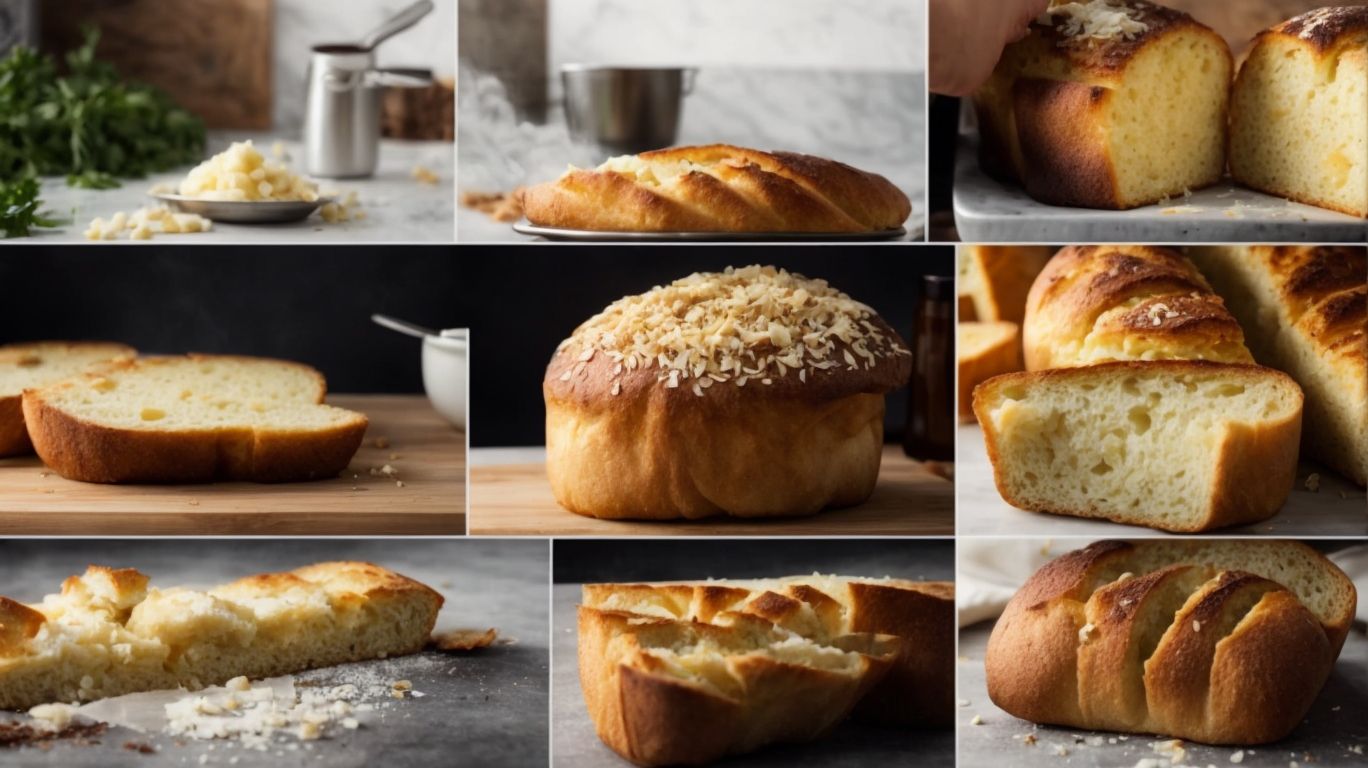
Credits: Poormet.Com – Matthew Allen
When baking garlic bread without an oven, you can opt for alternative methods like the stovetop, grill, or toaster oven to achieve crispy, flavor-packed results.
Skillet cooking is a great stovetop option where you can melt butter, garlic, and herbs before adding slices of bread to soak up the flavorful mixture. It allows for a crispy exterior while keeping the inside soft.
Grilling is another fantastic technique
, imparting a smoky flavor to the garlic bread. Brush the bread with garlic-infused butter and grill until crispy. Utilizing a toaster oven ensures even toasting and browning of the bread. Adjust the settings to achieve the desired level of crunchiness for your garlic bread.
Stove Top Method
Cooking garlic bread on the stovetop using a skillet allows for direct heat application, resulting in a crispy exterior and buttery, savory interior that’s perfect for appetizer enthusiasts.
When making garlic bread on the stovetop, the key is to ensure your skillet is preheated over medium heat, allowing the bread to cook evenly without burning. As the aroma of garlic and butter fills your kitchen, be attentive to flipping the bread occasionally to achieve a uniform golden crust.
By controlling the temperature and using butter generously, your garlic bread will absorb the flavors while the skillet seals in the delicious essence, creating a delightful culinary experience.
Grill Method
Grilling garlic bread imparts a smoky, charred flavor to the dish, enhancing its overall taste and texture with a hint of outdoor cooking essence.
When preparing garlic bread on the grill, setting up the grill is crucial. Ensure the grill grates are cleaned and oiled to prevent sticking. You can opt for direct heat for a quick sear and crispiness or indirect heat for a slower cooking process, allowing the flavors to meld delicately.
To achieve those sought-after grill marks, place the slices diagonally on the grates and resist the temptation to move them around frequently. Embrace the charred textures that add a delightful crunch to each bite.
For an extra burst of flavor, consider brushing the bread with herb-infused olive oil or minced garlic before grilling. These simple but effective steps can elevate your garlic bread to a mouthwatering delight, perfect for any outdoor gathering.
Toaster Oven Method
Utilizing a toaster oven for garlic bread offers a compact, efficient cooking solution that yields crispy, golden results with minimal effort and maximum flavor payoff.
When preparing garlic bread in a toaster oven, it’s important to preheat the oven to 375°F to ensure even cooking and optimum flavor infusion. Spread a mixture of butter, garlic, and herbs on slices of bread and place them on a baking tray or directly on the toaster oven rack. Toast for around 5-7 minutes, keeping a close eye to prevent burning. For an extra crunch, you can switch to the broil function for the last couple of minutes.
Tips for Making the Perfect Garlic Bread
Achieving the perfect garlic bread involves a delicate balance of creating crispy, flavor-packed slices that are both easy to make and undeniably delicious.
One key tip for ensuring a crispy texture is to toast the bread before adding the garlic butter mixture. This helps to prevent sogginess and enhances the crunch factor. When selecting ingredients, opt for fresh garlic cloves over garlic powder for a more robust flavor profile.
Experiment with different cheese combinations like mozzarella, parmesan, or cheddar to elevate the taste of your garlic bread. To simplify the cooking process, consider using pre-made garlic butter or preparing a big batch and storing it in the fridge for quick use.
What to Serve with Garlic Bread
Garlic bread pairs beautifully with a variety of dishes, including hearty pasta dishes, comforting soups, and fresh salads, enhancing the overall dining experience with its crispy, flavorful presence.
When serving garlic bread alongside pasta dishes, opt for classics like spaghetti carbonara or creamy fettuccine Alfredo to create a harmonious blend of flavors. For soups, consider pairing garlic bread with tomato basil soup or a rich minestrone to add a satisfying crunch to each spoonful.
In terms of salads, a crisp Caesar salad or a balsamic-dressed caprese salad perfectly complements the garlicky goodness of the bread. To elevate your presentation, try slicing the garlic bread diagonally for an elegant touch that makes it visually appealing.”
Pasta Dishes
Pairing garlic bread with pasta dishes creates a harmonious blend of flavors and textures, offering a satisfying and indulgent dining experience for pasta lovers.
Whether you opt for a classic spaghetti with marinara sauce or a creamy fettuccine Alfredo, the addition of garlic bread can elevate the meal to new heights. The crunchiness of the garlic bread contrasts beautifully with the softness of the pasta, providing a delightful sensory experience.
For those craving variety, experimenting with different pasta shapes like penne, rigatoni, or bowties can add an exciting twist to the meal. Pairing the right pasta shape with a complementary sauce is key to achieving a balanced flavor profile that satisfies the palate. When serving garlic bread, consider toasting it until golden brown and brushing it with a garlic-infused butter for that extra burst of flavor.
Soups and Stews
Serving garlic bread with soups and stews adds a delightful crunch and savory element to the meal, creating a comforting and satisfying dining experience with each bite.
Garlic bread’s crispy exterior and its warm, buttery insides perfectly complement the rich, hearty nature of soups and stews. The contrast in textures between the soft, steaming hot soup or stew and the crispy, garlic-infused bread offers a delightful culinary symphony for the palate. Whether it’s a thick and creamy potato soup, a hearty beef stew, or a fragrant minestrone, the addition of garlic bread elevates the entire dining experience.
The garlic-infused aroma lingers in the air, enticing taste buds and heightening the overall sensory experience. Each bite of the crunchy bread dipped into the steaming bowl of soup or stew imparts a burst of flavor, making the meal feel complete and utterly satisfying.
Salads
Adding garlic bread to salads introduces a crunchy, flavorful component that elevates the salad’s taste and texture, offering a satisfying contrast and enhanced dining experience.
Garlic bread’s crispy crust and garlic-infused butter perfectly complement a variety of salad options, from classic Caesar salads to vibrant caprese creations. The rich garlic flavor pairs beautifully with fresh greens, juicy tomatoes, and tangy dressings, creating a symphony of flavors on the palate. Experimenting with different salad ingredients like grilled vegetables, fruits, or even protein choices can add depth and complexity to your salad-garlic bread combo.
Conclusion
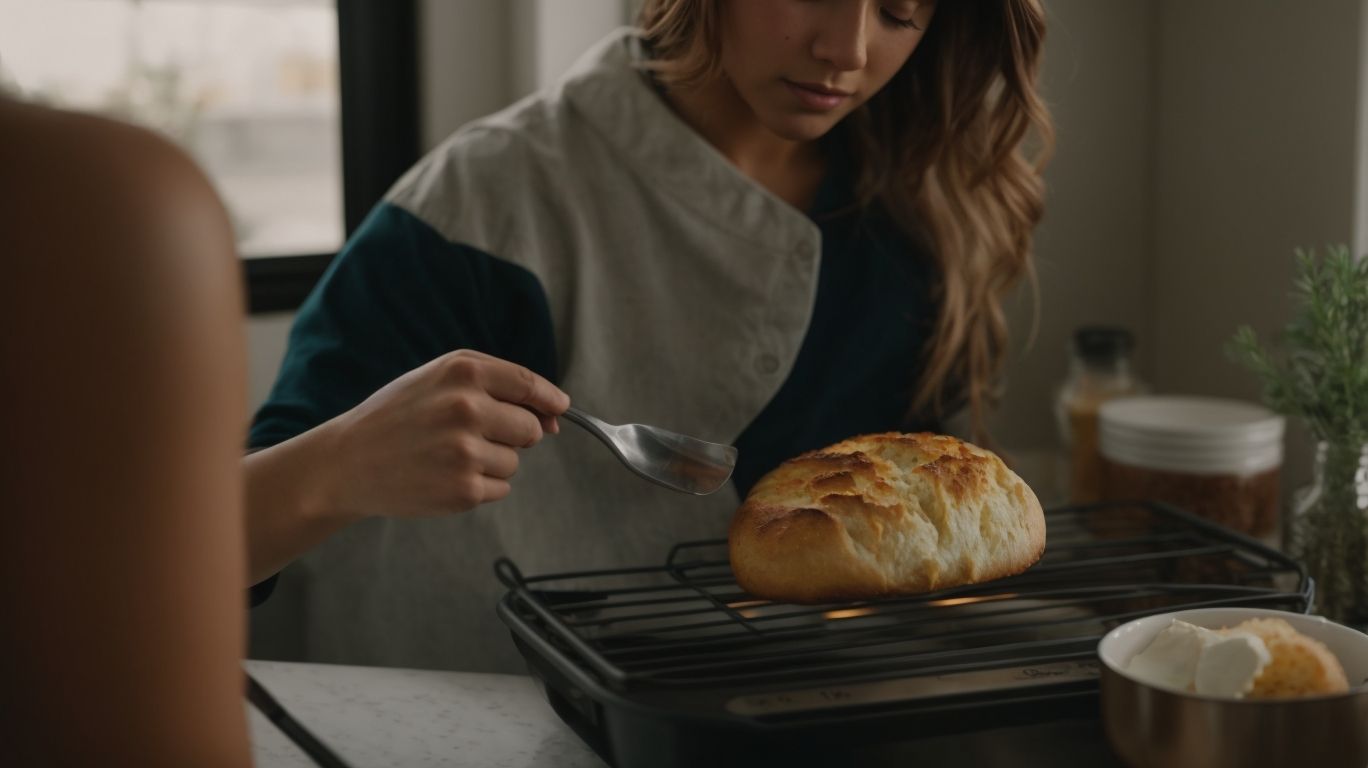
Credits: Poormet.Com – Justin Hill
Garlic bread remains a beloved culinary delight that transcends traditional baking methods, offering a versatile and flavorful dish that complements a wide array of meals and occasions.
Its garlicky aroma combined with buttery goodness creates a sensory experience that entices taste buds and elevates simple meals to gourmet status. Whether served as an appetizer, side dish, or even a snack, garlic bread adds a depth of flavor and texture that never fails to impress guests. Its simplicity in preparation makes it a go-to choice for rushed evenings or elaborate dinners, amplifying the dining experience with its warm, comforting presence.
Frequently Asked Questions
How to Cook Garlic Bread Without an Oven?
1. Can I make garlic bread without an oven?
Yes, it is possible to make garlic bread without an oven. There are several alternative methods that you can use.
2. What are some alternative methods for cooking garlic bread?
You can use a stovetop skillet, a grill, a toaster oven, or a microwave to make garlic bread.
3. How do I make garlic bread on a stovetop skillet?
Start by heating a skillet on medium-high heat. Place the garlic bread slices in the skillet and cook for 2-3 minutes on each side until they are golden and crispy.
4. Can I make garlic bread on a grill?
Yes, grilling garlic bread is another alternative. Place the bread slices directly on the grill and cook for 2-3 minutes on each side until they are crispy.
5. Is it possible to make garlic bread in a toaster oven?
Yes, you can use a toaster oven to make garlic bread. Place the bread slices in the toaster oven and cook for 2-3 minutes until they are golden and crispy.
6. Can I make garlic bread in the microwave?
Yes, you can make garlic bread in the microwave. Place the bread slices on a microwave-safe plate and microwave for 30 seconds to 1 minute until they are crispy.

